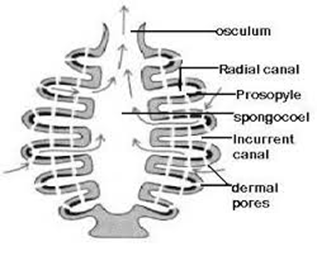Self-Pollination & Cross- Pollination And Their Controversies
Types Of Pollination
The transfer of pollen grains from the stigma of a pistil is known as Pollination. Pollination in flowering plants occurs by two methods- self-pollination and cross-pollination.
Self Pollination - Self Pollination involves the transfer of pollen grain from the anther to the stigma of the same flower or genetically similar flower. It is of two types -
Autogamy - Transfer of pollen grains from the anther to the stigma of the same flower is known as Autogamy. It occurs by the three methods -

Self Pollination showing by A& B and cross-pollination is shown by B & C

- Cleistogamy - Some Plants never open to ensure complete self-pollination. This condition is called Cleistogamy. For example - oxalis, viola.
- Homogamy - Anther and stigma of the bisexual flower of the same plants mature at the same time. This condition is called Homogamy. For example - Mirabilis, potato, sunflower, etc.
- Bud Pollinatiton - Anther and stigma of the bisexual flowers of some plants mature before the openings of the buds to ensure self-pollination. For example - wheat, rice, pea.
Geitnogamy - When anther of one flower is transferred to the stigma of another flower borne on the same plant, then this condition is known as Geitonogamy.
Advantage Of Self - Pollination -
- Chances Of Pollination are more.
- Self Pollination maintains the purity of race and avoids mixing.
- It needs not to produce a large number of pollen grains.
Disadvantage Of Self - Pollination -
- No possibility of the introduction of new desirable characters.
- Undesirable characters can not be eliminated.
- It does not help in evolution.
Cross-Pollination - Transfer of pollen grains from the flower of one plant to the stigma of another plant flower, is known as Cross-Pollination or Allogamy.
Types - There are two types of cross-pollination
- Xenogamy - The pollination in which the pollen grains of one flower transferred to the stigma of another flower of the same species is known as Xenogamy.
- Hybridism - The pollination in which pollen grains of one flower is transferred to the stigma of another flower of different species is known as Hybridism.
Adaptations Of Cross-Pollination -
Self-Incompatibility - In this condition, the pollen of one flower is not able to fertilise the ovules of the same flower even in their favourable conditions.
Dicliny - In many angiosperms the stamen and carpels are found in different flowers, then this condition is known as Unisexuality or Dicliny. It is of two types -
- Monoecious - When male and female part of the flower present at the same time then this condition is called Monoecious. For example - Maize, castor.
- Dioecious - When male and female part of the flowers present on the different flower of different plants. For example - Cannabis sativa
Dichogamy - In many angiosperm plants, the male and female parts do not mature at the same time then these conditions are known as Dichogamy. The conditions in dichogamy are may be of two types -
- Protandry - The conditions in which the anther part mature earlier than the carpels. For example -Sunflower.
- Prtogyny - The condition in which the carpel mature earlier than the stamen. For example - Rose.
Herkogamy - In some homogenous flowers there are some adaptations due to which self -pollination can not possible like in flowers the stigma projects beyond the stamens so that the pollen grains do not fall on it.
Heterostyly - The flowers may be of different types based on the length of stamens and style and due to this effective pollination is not possible in flowers of its own types.
🔗 Top Internal Links on Biology Blog
| Topic | Link |
|---|---|
| Types of Muscles: Structure, Proteins, and Functions | Read Now |
| What is Pollination? Types and Mechanism | Read Now |
| Short Notes on Anatomy of Cockroach | Read Now |
| Why Are Living Organisms Classified? | Read Now |
| 7-Celled 8-Nucleate Structure Ovule With Labelled Diagram | Read Now |


𝓖𝓸𝓸𝓭 𝓳𝓸𝓫
ReplyDeletebanany ka tarica
ReplyDelete